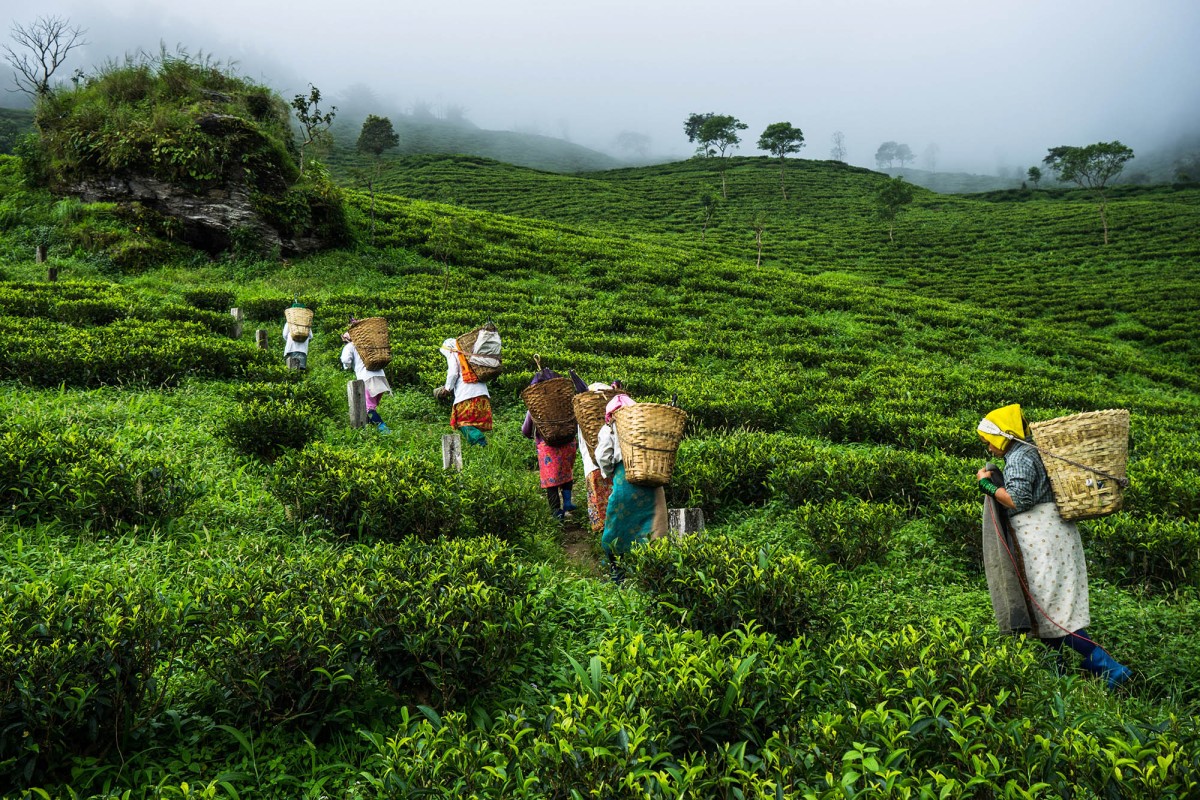Makaibari: 2022

Introduction: Makaibari
If you’ve ever been to Kurseong and wondered about the tea production method, then you should take a tour of the Makaibari Tea industry. During the Kurseong visit last month, I went to the Makaibari Tea factory. We made a prior appointment with Laltu Purokayat, an official of the Makaibari Tea factory, to take us for a round and explain the processing of the Tea. We stayed at hotel White Orchid, St Mary village. The tea factory was about twelve kilometers away.
Journey to Makaibari Tea factory

Pradeep Lama entered the hotel with his red Maruti car to pick us to Makaibari. He is sixty. When you look at him, you may want to shorten his age by ten years. He looks younger than his age. Pradip worked in the Air Defence Department of the Indian Army. He had postings all over the country during his service. After retirement, he works with the state tourism office, Kurseong. He works in the tourism department and keeps a lot of interesting information about local life.

While driving to Makaibari, Pradip told me the Banerjee family built the Makaibari Tea factory in 1859 after the sepoy mutiny. From 1859 to 2014, the Banerjee family owned the firm. The company’s performance peaked under Raja Banerjee. He gave a tea stall at the Olympics in 2008 and 2012, earning the country a good income. But in 2014, Raja Banerjee sold the company to Laxmi tea company.
The tea garden worker works from morning 7 to 5 in the evening. Each worker has to pluck 3 kg leaf in their duty hour span. He gets an incentive if he gets over three kilograms. But nowadays, the tea leaf collection is done by trimming rather than plucking.
Visit Makaibari Tea factory: Tea processing.

I didn’t realize when I reached Makaibari that I was so engrossed in talking with Pradip. Pradip introduced me to Laltu Purokayat ‘the official of the Makaibari Tea factory. Purokayat was going to tell us about the tea manufacturing mechanism. He said that Girish Chandra Banerjee bought the tea garden in the year (1857) during the Sepoy mutiny. In 1859, he started the factory. From 1859 to 2014, the Banerjee family was the proprietor of this factory. But in 2014, Raja Banerjee sold the factory to the Laxmi company.
It is amazing that when India had British rule, in such a situation, how a Bengali family captured the tea market and made a fortune out of it.

The current owner of the Laxmi company is Rudra Chatterjee and Deepak Chatterjee. “Laxmi company too is a premier Tea producing company, established in 1912. According to Purokayat, the company got certification for organic Tea in 1988.
“We have adopted a biodynamic process and used cosmic power to grow tea leaves. We pluck tea leaves from the tea garden on the night of every full moon from evening six to night ten thirty. On average, tea leaf has 1.7 milligrams of caffeine per gram of leaf. However, Purokyat said that on a full moon night, the amount of caffeine in a gram of leaf increases to 7.1 milligrams.
“We can see the effect of a full moon night on the river through the tidal wave. But the air also contains moisture and droplet of liquid. We realize the effect of a perfect full moon night on the air since we grow tea leaves with a biodynamic process. And that’s why the full moon night tea leaves have a higher caffeine percentage”, asserted Purokayat. Purokayat claimed caffeine is an anti-cancer agent.
But I checked on the internet. A website mentioned that caffeine is a natural stimulator for alerting the brain.
We spent about an hour inside the Makaibari Tea factory. The withering section of the plant is where the processing begins. First, workers place the plucked leaves on a tray. The tray is called the trough. Each tray has a fan behind it.

The fan’s cool air lessens the leaf’s external moisture. A hot air blow connected with the fan removes the leaf’s internal moisture. Through this process, the moisture content of the leaf reduces to 35 percent. This process takes 12 hours. The withering operation takes place at night.

Each trough has a tunnel. Each bag carrying 80 kilograms of withered leaf passes through the tunnel to the rolling section.
The rolling machine is one hundred and sixty years old, according to Purokyat. Purokyat stated that instead of the modern device, they still use traditional technology. First, the rolling process releases the flavor/aroma of the Tea.

Next, the leaves are put in a tray to ferment. Except for green Tea, all varieties of tea leaves undergo fermentation. The duration of fermentation is two hours when the green leaf turns black. (Green Tea variety put on directly for drying operation.).

The fermented tea leaf (35% moisture) is loaded into a drying machine set at seventy-degree centigrade during operation. The operation lasts for twenty minutes to reduce the moisture of the leaf from 35% to 3%.
The tea leaf is graded and sorted before being sent for packaging.




Conclusion
I will come up with a more interesting exploration of Kurseong Dow hill haunted stories and other sight-seeing places in my next part. But, again, I want my readers to be patient.




